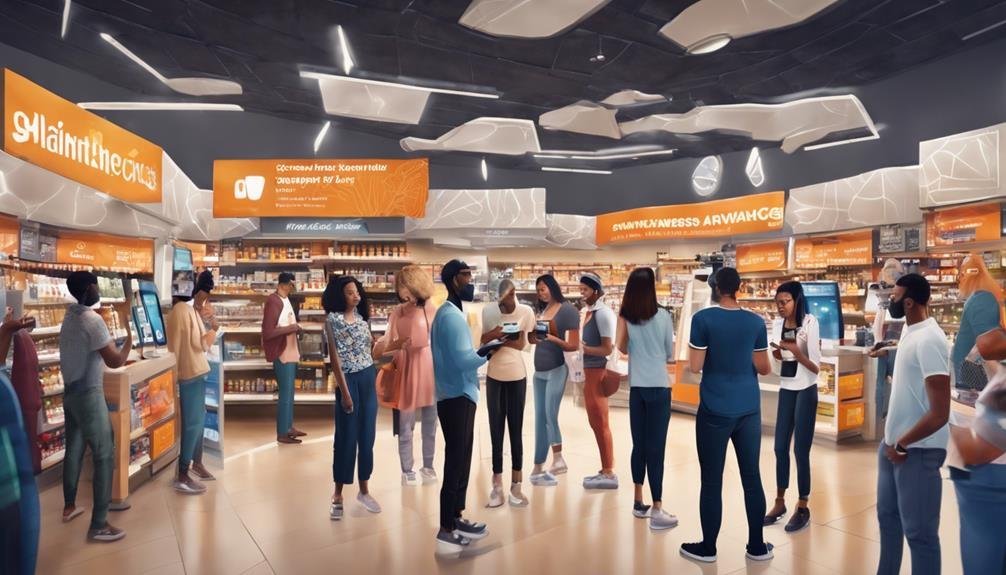Across the globe, the COVID-19 pandemic has significantly reshaped financial transactions. The use of wallet apps soared, driven by safety concerns and convenience. In the U.S., contactless payments shot up by 150%, with a 40% surge in wallet app transactions. Globally, mobile wallet usage spiked by 17%, especially in emerging markets. The shift to cashless payments accelerated, driven by hygiene worries.
Online payment services expanded rapidly, aiding the acceptance of digital transactions. Peer-to-peer payment apps like Venmo saw a cashless boom. QR code payments gained traction for added security. In-store mobile payments rose 29%, reflecting a preference for contactless methods. Virtual debit cards offered enhanced safety measures. Discover more about how the pandemic reshaped financial transactions.
Brief Overview of Impact Of Covid 19 On Digital Payments
- Surge in contactless payments by 150%.
- Growth of mobile wallet usage by 17% globally.
- Increase in digital wallet transactions by 40%.
- Expansion of online payment services.
- Boost in-store mobile payments by 29%.
Increased Contactless Payments Adoption
During the COVID-19 pandemic, contactless payment adoption skyrocketed by 150% in the U.S. This surge was fueled by the need for safer and more convenient payment methods, leading to a significant shift towards digital payments and digital wallets. With the ongoing concerns about virus transmission through physical contact, consumers found reassurance in the touch-free nature of digital payments offered by mobile wallet apps, enhancing their confidence in these methods.
Businesses played a crucial role in this shift, quickly adapting to the changing landscape by integrating contactless payment options. This was in response to the increasing demand for safer transactions. Over 70% of consumers globally preferred contactless payments, highlighting the widespread acceptance of this shift in payment behavior. As a result, wallet apps experienced a 40% increase in transactions processed through contactless payments, showcasing the rapid adoption of these digital solutions during the pandemic.
The COVID-19 crisis catalyzed the growth of digital payments, pushing consumers and businesses toward a more secure and efficient way of conducting transactions.
Growth in Mobile Wallet Usage
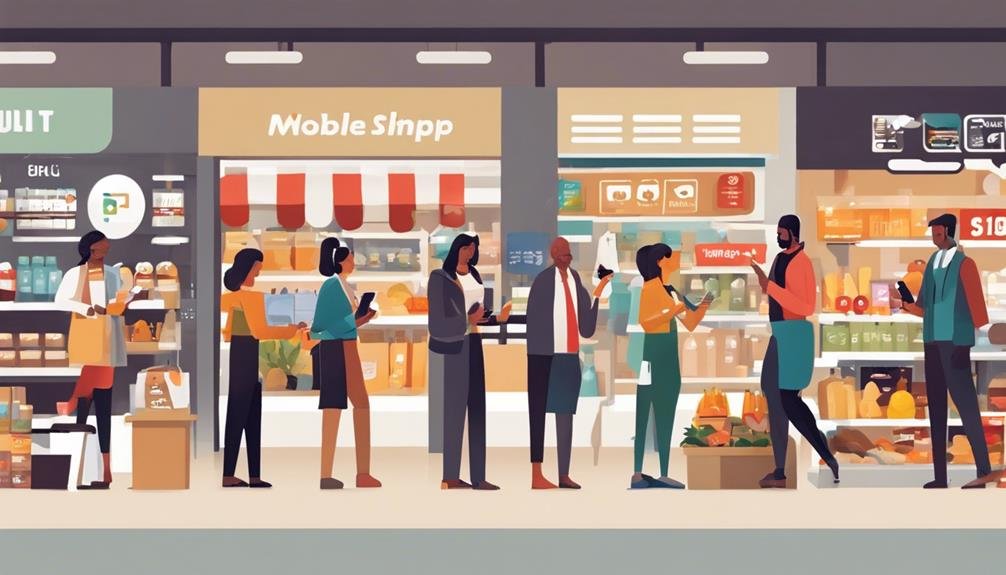
With a notable 17% increase globally since the onset of the COVID-19 pandemic, mobile wallet usage has witnessed a significant surge. Emerging markets, in particular, experienced a substantial 26% growth in mobile wallet adoption during this period. Contactless payments through mobile wallets also saw a remarkable surge, increasing by 36% in the past year. Major wallet apps like Apple Pay and Google Pay have reported a 30% increase in transactions, indicating a shift towards digital payment methods. This global acceptance and growth of mobile wallet usage paint an optimistic picture of the future of digital transactions.
Around the world, individuals are turning to mobile wallets for the first time, realizing the convenience and security they offer. As more people download these apps and familiarize themselves with the Terms of Use, the trend of using mobile wallets is likely to continue growing.
Rise of Digital Wallet Transactions

Digital wallet transactions globally have surged by 40% since the onset of the COVID-19 pandemic. This significant increase can be attributed to various factors, including the emphasis on digital wallet security, the growing consumer trust in these platforms, and their transaction convenience.
With the rise of digital transactions, ensuring digital wallet security has become paramount. Users are increasingly concerned about their financial information and personal data safety. Companies in the digital wallet sector have responded by implementing robust security measures to protect user’s sensitive information, thereby enhancing trust and confidence in these platforms.
One of the key drivers behind the surge in digital wallet transactions is the convenience they offer. Consumers appreciate the ease and speed with which they can make payments using their mobile devices, eliminating the need to carry physical cash or cards. This convenience factor has been a driving force behind the surge in digital wallet transactions globally. Moreover, the touch-free nature of these transactions aligns with the ongoing concerns about virus transmission through physical contact, further enhancing their appeal.
Shift Towards Cashless Transactions
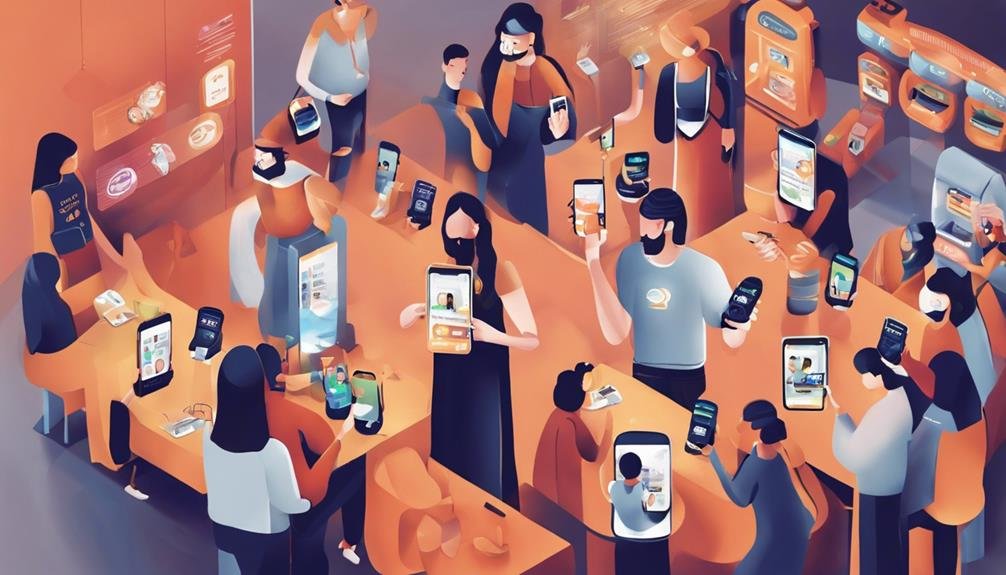
During the COVID-19 pandemic, the shift towards cashless transactions gained momentum as people sought safer payment methods. Contactless payments and digital wallet adoption grew popular due to concerns about spreading germs through physical cash. This trend highlighted the convenience and hygiene benefits of using wallet apps for transactions.
Contactless Payment Popularity
Amidst the global impact of COVID-19, the surge in contactless payment usage has revolutionized how consumers prefer to handle transactions, emphasizing convenience and reduced physical contact. Contactless payment trends show a significant increase in adoption rates globally, with businesses and retailers promoting this method to minimize contamination risks.
The benefits of contactless payments, including quick transactions and enhanced safety measures, have made them a preferred choice for many individuals, particularly the younger generation. This shift towards cashless transactions will likely continue, shaping the future of payment methods. The hygiene concerns associated with cash have further propelled the popularity of contactless payments, indicating a promising future for this convenient and secure payment option.
Digital Wallet Adoption
The surge in contactless payment usage during the COVID-19 pandemic made a noticeable change towards cashless transactions evident. Digital wallet adoption saw a significant increase as individuals sought safer payment methods. The contactless convenience offered by digital wallets aligned with hygiene concerns, prompting many to embrace this technology. The ease of use and various benefits of wallet apps further fueled their widespread adoption.
This shift towards cashless transactions addressed immediate health worries and accelerated the overall growth of digital payments. The pandemic acted as a catalyst, pushing more people to rely on digital wallets for their transactions and emphasizing the importance of convenience and safety in the evolving landscape of payment methods.
Expansion of Online Payment Services
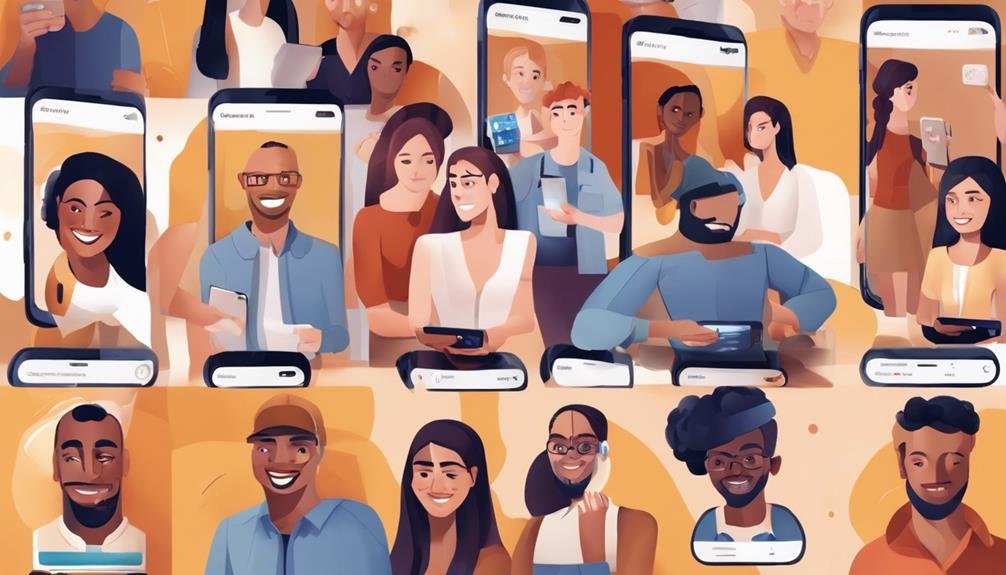
The surge in digital transactions during the COVID-19 pandemic propelled the expansion of online payment services, notably increasing the usage of wallet apps for contactless payments. This period witnessed remarkable mobile wallet innovation, marking a shift in the evolution of online payment. Digital transaction trends soared as people turned to the convenience and safety offered by wallet apps for their financial transactions.
The rapid adoption of online payment services during the pandemic highlighted the importance of secure and efficient platforms. Businesses quickly adapted to accept digital payments, further fueling the growth of wallet apps. Retailers played an essential role in embracing this change, promoting contactless payments. The growth in online payment services emphasized the need for modern financial solutions that cater to evolving consumer behaviors.
As more individuals sought remote payment options, the reliance on wallet apps became a norm, shaping the future of digital transactions.
Surge in Peer-to-Peer Payment Apps
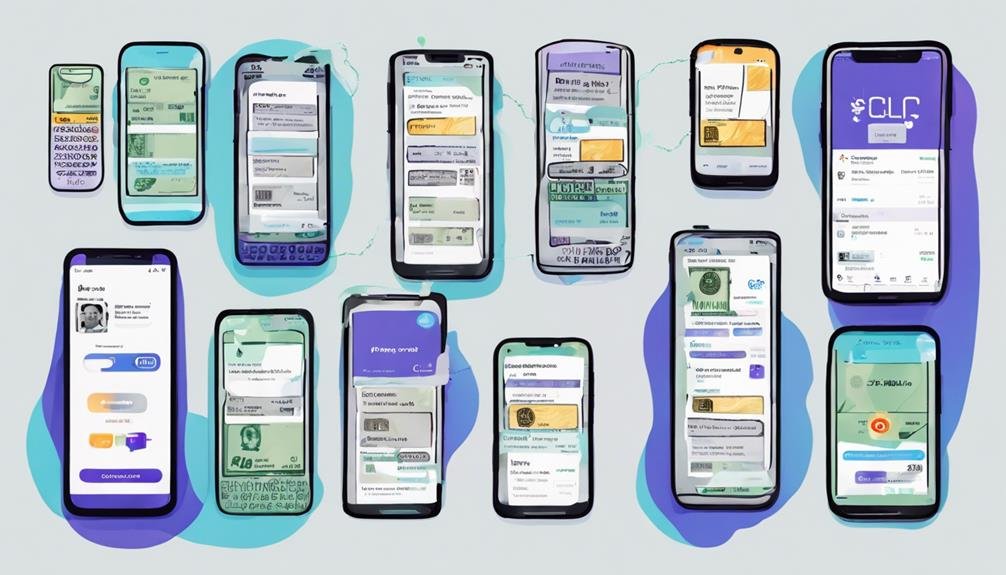
During the COVID-19 pandemic, peer-to-peer payment apps experienced a surge in transactions, with more people opting for cashless payments to avoid physical currency. The convenience and safety of splitting bills and sending money without physical contact led to increased use of apps like Venmo, PayPal, and Cash App. Contactless payments through these apps became the go-to choice for secure and efficient financial transactions during uncertain times.
Increased P2P Transactions
Indisputably, the surge in peer-to-peer payment apps during the pandemic reshaped how individuals handled their financial transactions. P2P payment trends witnessed a significant uptick as people turned to platforms like Venmo, Cash App, and Zelle for social distancing transactions. The appeal of instant money transfers without physical contact made these apps a go-to choice for many during COVID-19. Users found it convenient to split bills, make online purchases, and pool funds for group expenses while adhering to safety measures.
This increase in P2P transactions highlighted the shift towards digital payments. It underscored the growing reliance on mobile wallet apps for everyday financial needs. These transactions’ ease, speed, and contactless nature played an essential role in reshaping payment habits during the pandemic.
Rise in Cashless Payments
Amidst the pandemic, the surge in peer-to-peer payment apps reshaped financial transactions and propelled the rise in cashless payments. Peer-to-peer payment app usage globally increased by 17% during the COVID-19 crisis, with cashless transactions surging by 40% in heavily impacted regions. The implications of this shift towards a cashless economy are significant, reflecting changing mobile payment trends and highlighting the benefits of digital wallets.
Post-pandemic wallet apps saw a 25% growth in new user registrations. In comparison, contactless payment volume rose 30% compared to pre-pandemic levels. Users embracing cashless payments led to a 15% increase in the average transaction value on wallet apps, showcasing the increasing reliance on digital financial solutions.
Adoption of QR Code Payments
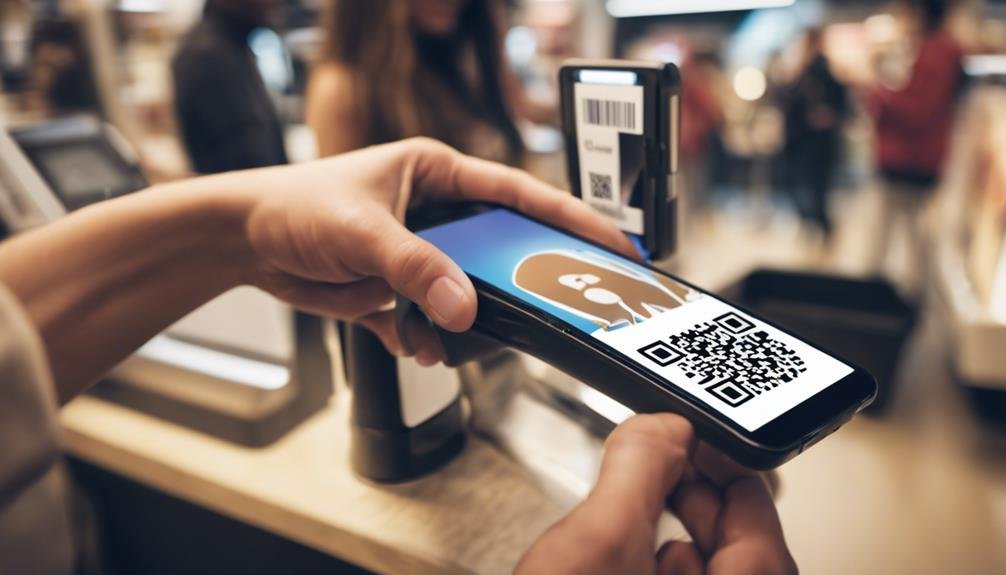
Experiencing a significant rise in popularity during the COVID-19 pandemic, QR code payments emerged as a favored contactless payment option for businesses and consumers alike. QR code security measures were bolstered to guarantee safe transactions, addressing concerns about potential fraud or data breaches. Advancements in QR code technology improved scanning speeds and accuracy, making the process more efficient for users.
Looking ahead, future trends in the future of QR codes indicate a continued growth in adoption, with more businesses integrating this payment method into their operations. The ease of scanning QR codes provided a convenient way to make payments. It contributed to the overall hygienic practices encouraged during the pandemic. Many wallet apps embraced this trend by integrating QR code scanning features, facilitating seamless and secure user transactions.
This widespread acceptance and use of QR code payments reflect a shift towards more contactless payment options in various settings.
Boost in In-Store Mobile Payments
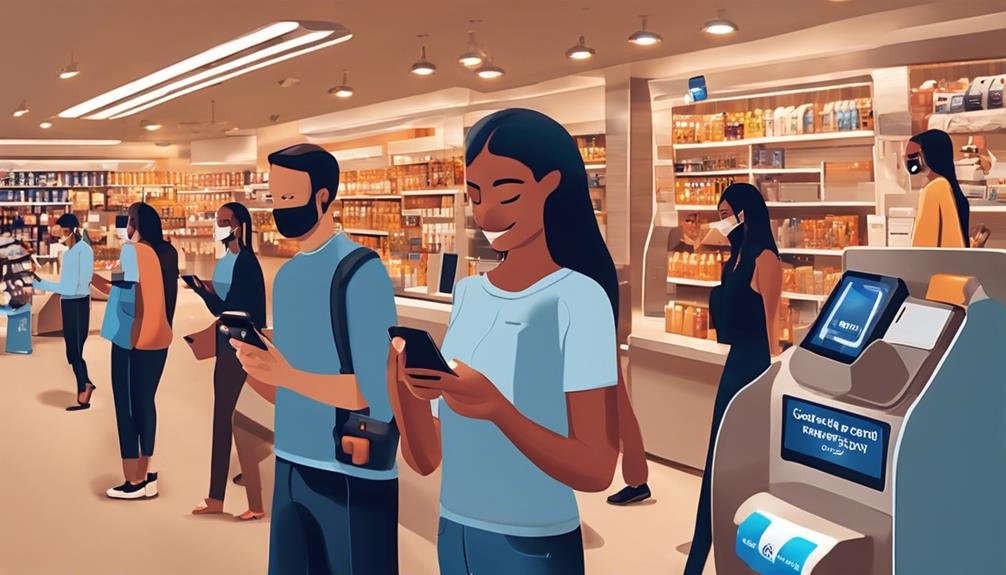
The surge in in-store mobile payments during the COVID-19 pandemic underscored consumers’ growing preference for contactless transaction methods. In 2020, global in-store mobile payments increased by 29%, showcasing the shift towards contactless payment options. Mobile wallet benefits, such as convenience and security, played a significant role in this growth. Popular wallet apps like Apple Pay, Google Pay, and Samsung Pay witnessed a surge in usage for in-store transactions as people valued the advantages of contactless payments.
Businesses and retailers adapted by offering mobile payment options to meet the rising demand for safer transactions. The ease and safety of in-store mobile payments contributed to their popularity during the pandemic, further driving in-store transaction growth. As consumers prioritize contactless payment methods, the trend of using mobile wallets for in-store purchases is expected to persist beyond the pandemic.
Emergence of Virtual Debit Cards
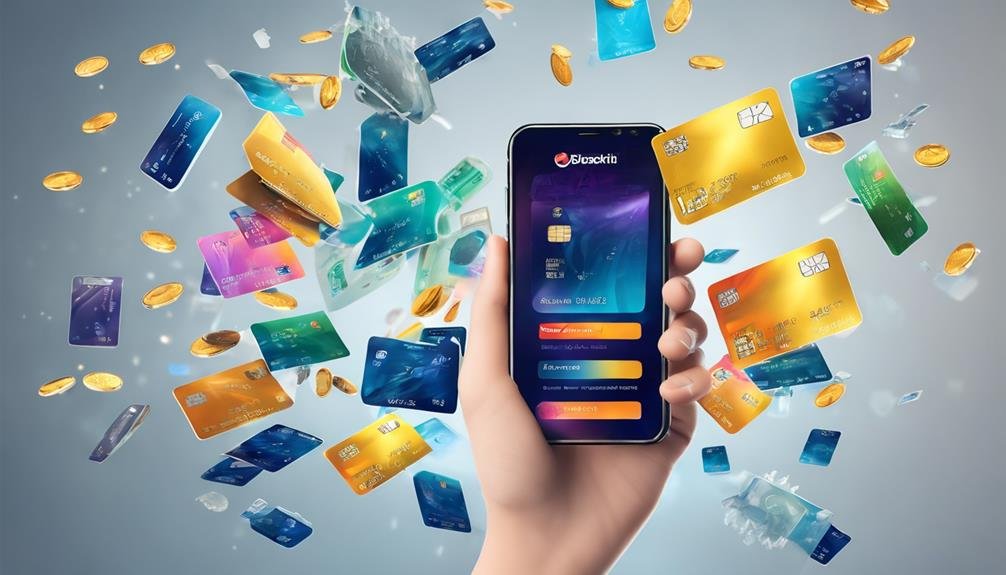
Virtual debit cards have gained popularity for their secure transactions and seamless integration with contactless payments. Wallet apps now offer these virtual cards as a convenient and safe way to purchase online. By providing an extra layer of security, virtual debit cards have become a go-to option for consumers seeking hassle-free and protected transactions.
Virtual Card Security
With enhanced security features like unique card numbers for each transaction, virtual debit cards have become increasingly popular through wallet apps. These cards offer enhanced security by providing transaction control and fraud prevention measures. Users can generate virtual debit cards quickly within wallet apps, adding an extra layer of protection against unauthorized transactions.
Since virtual cards are not linked to a physical card, the risk of theft or loss is markedly reduced, making them a preferred choice for online shopping and digital payments. The pandemic has further accelerated the use of virtual debit cards as people prioritize secure and contactless payment methods. Features like transaction limits and merchant restrictions empower users with greater control over their spending, minimizing the chances of unauthorized charges.
Contactless Payment Integration
Amid the shift towards contactless transactions, the integration of virtual debit cards into wallet apps has revolutionized how consumers approach payments. Virtual card benefits include enhanced security and convenience, allowing users to transact without physical contact. Contactless payment advantages have become increasingly important during the COVID-19 pandemic as they reduce the risk of virus transmission.
Secure wallet transactions are now more accessible through the emergence of virtual debit cards, catering to the growing demand for contactless payment options. This integration has boosted user confidence in making transactions and provided a safe and convenient alternative to traditional payment methods. Wallet apps offering virtual debit cards have seen a significant rise in usage, emphasizing the importance of contactless payment integration in today’s digital landscape.
Integration of Digital Wallets in E-commerce
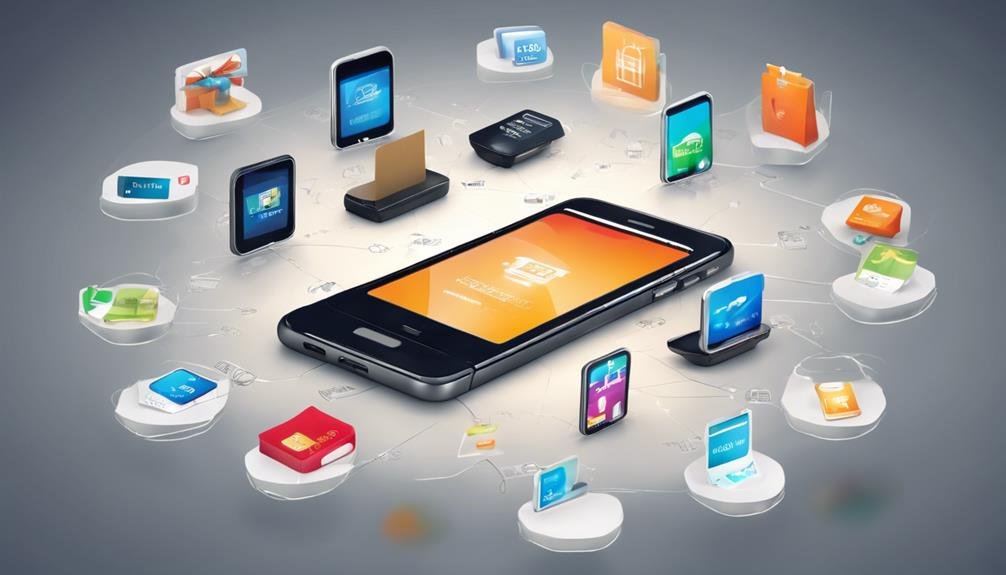
The surge in e-commerce transactions during the COVID-19 pandemic led to a notable increase in online retailers’ integration of digital wallets as a preferred payment method. Digital wallet benefits, such as contactless payments and essential security features, have played a pivotal role in the evolution of e-commerce. Online shoppers appreciate the convenience that digital wallets offer, allowing seamless transactions without needing to enter credit card details repeatedly. The ease of use and swift checkout process have further propelled the adoption of digital wallets in online shopping.
Integrating digital wallets in e-commerce has simplified the payment process for consumers and merchants. Digital wallets have become a favored choice for online transactions by providing a secure and efficient payment method. As more consumers embrace the convenience of online shopping, using digital wallets in e-commerce is expected to continue on an upward trajectory. The future of e-commerce is closely intertwined with the seamless integration of digital wallet solutions.
Frequently Asked Questions
How Has the Use of Wallet Apps Impacted the Overall Consumer Spending Habits During the COVID-19 Pandemic?
During the pandemic, wallet apps revolutionized your spending habits. Embracing contactless payments, you adapted to new consumer behavior trends. Mobile wallet use surged globally, highlighting the shift to digital transactions for enhanced financial security amidst uncertain times.
What Security Measures Have Been Put in Place to Protect Users’ Financial Information When Using Mobile Wallet Apps?
Wallet apps have implemented enhanced encryption, two-factor authentication, and fraud detection algorithms to protect your financial information. Your data is secure, ensuring peace of mind while using mobile payment services.
Are Any Specific Demographics or Regions That Have Seen a Particularly Significant Increase in Wallet App Usage?
In response to specific demographics and regions, gender breakdowns, urban versus rural usage, and age groups have significantly increased wallet app usage. These trends highlight diverse user engagement with the technology.
What Are Some of the Challenges or Barriers That May Hinder the Widespread Adoption of Digital Wallet Transactions in the Future?
Traversing the future of digital wallets can feel like crossing a turbulent river with hidden rocks—barriers like security concerns, lack of universal acceptance, and technological limitations could impede widespread adoption, challenging the path forward.
How Have Businesses and Retailers Adapted to Accommodate the Shift Towards Cashless Transactions and Mobile Payments?
To adapt to the shift towards cashless transactions and mobile payments, businesses and retailers embraced contactless payment, mobile banking, and online shopping. They prioritized convenience and safety, meeting customer demands in the changing landscape.
Conclusion
To sum up, the COVID-19 pandemic has dramatically enhanced the use of wallet apps in various ways. From heightened contactless payments to the emergence of virtual debit cards, the transition towards cashless transactions and growth in mobile wallet usage has reshaped how we manage our finances. With the expansion of online payment services and the integration of digital wallets in e-commerce, the convenience and efficiency of using wallet apps have become more apparent than ever.
